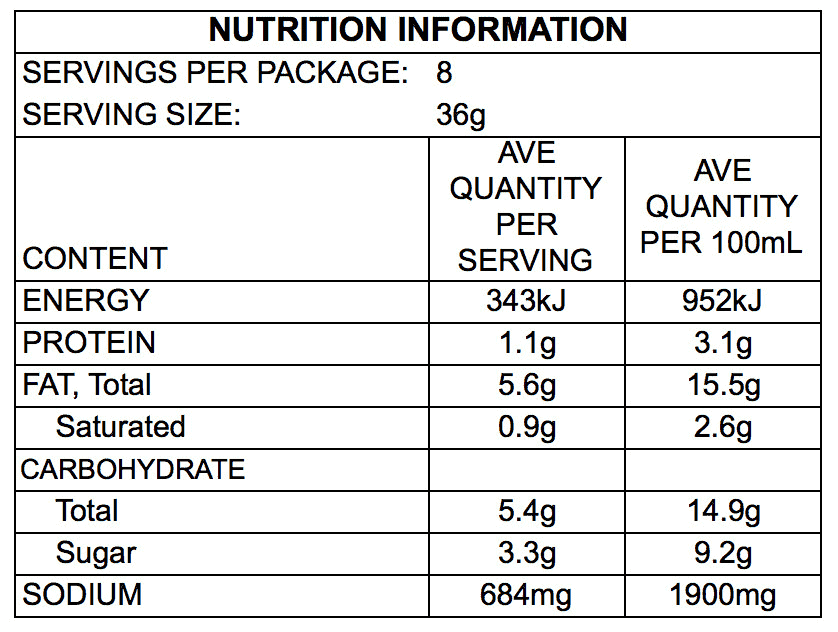Demystifying Nutrition Information Panels: A Parent’s Essential Guide
Hey there, awesome parents! Navigating the supermarket aisles can sometimes feel like a treasure hunt, especially when you’re trying to make the healthiest choices for your lovely little ones. But fret not! Today, we’re going to decode the mysterious hieroglyphics known as Nutrition Information Panels (NIPs). Okay, they’re not actually hieroglyphics – but they can be just as challenging to interpret. Let’s dive into the world of food labels and transform you into a nutrition detective!
What are Nutrition Information Panels?
First things first, my fellow health-conscious caretakers. Nutrition Information Panels are those rectangular boxes on the back or side of your food packaging that are jam-packed with numbers and terms. Why should we care about them? Simply put, they are your secret weapon to understanding what’s really in the food you’re considering for your family. These panels provide details such as energy (calories), proteins, fats, carbohydrates, sugars, and sodium – the key players in your child’s growth and development.
Breaking Down Nutrition Information Panels Step by Step
Ready to become a pro at reading NIPs? Let’s break it down together:
- Serving Size: This little number at the top is the manufacturer’s idea of an average serving. But remember, it may not equal the portion size your child eats, so you may have to do a little math (Fun, right?). Always compare this with the amount that would typically be eaten at home.
- Per 100g or Per 100mL Column: Right next to the serving size column is this magical comparison tool. It lets you compare apple to apples (or cereals to cereals) across different brands, no matter what serving size they use. This is super useful for comparing overall nutritional value!
Deciphering the Nutrient Jigsaw
Moving down the panel, you’ll come face to face with a list of nutrients that play a critical role in your child’s diet:
- Energy: Measured in kilojoules (kJ) or calories, this section tells you how much fuel your child will get from the food. Your little dynamo needs energy for play, learning, and growing.
- Proteins: The building blocks of your child’s muscles, skin, enzymes, and hormones – basically, the stuff tiny humans are made of. Look for adequate protein, especially if you have a growing athlete or a little philosopher pondering the nature of existence at your dinner table.
- Fats: Not all fats are villains. Some fats are essential for brain health, but you do want to keep an eye out for the saturated fats and trans fats – those are the sneaky baddies that may lead to health issues down the track.
- Carbohydrates: The body’s go-to energy source. Includes sugars, but let’s not turn that into a sugar rush, okay? Aim for more complex carbs, like whole grains, that provide sustained energy for your ever-energetic munchkins.
- Sugars: Under carbohydrates, sugars appear. This is where the plot thickens. Sugars can be naturally occurring or added. While natural sugars from fruit (fructose) and dairy (lactose) are part of a healthy diet, added sugars are the ones you want to play hide and seek with – and not find too much of.
- Sodium: Known also as salt, sodium should be on your watchlist. Too much sodium could lead to unwanted adventures like high blood pressure, even in kiddos. Your mission, should you choose to accept it, is to find foods with lower sodium content.
With this newfound knowledge, you can confidently waltz down the grocery aisles and make choices that’ll make both Captain Vegetable and your kids proud.
Keeping an Eye on Dietary Fibre, Vitamins and Minerals
Further down the panel, you may find information about dietary fibre, vitamins and minerals. These are the unsung heroes that keep your child’s digestive system happy and support their overall health.
The Fine Print
Now, don’t skip over the fine print! That’s where you’ll find the ingredient list, which often contains important information about possible allergens, food additives, and the actual ingredients used to make the product.
Reading and interpreting Nutrition Information Panels doesn’t have to be daunting. With a little practice and this guide in your back pocket, you can make empowered, informed decisions about the food you bring home. Remember, knowledge is power and ensures that every food choice supports your child’s happy, healthy growth journey. Stay tuned as we later unlock more hidden secrets of the grocery shelves and continue to simplify the path to nutritious eating for your family!

5 Things Parents Should Know in Preparing for Nutrition Information Panels
Before you embark on your next grocery shopping trip, here are five handy tips to get you prepped and ready to tackle those Nutrition Information Panels like a pro:
- Familiarize Yourself With Daily Nutrient Requirements: Each child is unique, and their nutritional needs change as they grow. Get to know the general dietary guidelines for your child’s age group. This will give you a reference point when comparing different food options.
- Practice Portion Awareness: Understanding the difference between ‘serving size’ on the packet and the ‘portion size’ your child consumes is vital. Practice visualizing or measuring out typical portion sizes at home, so you can better assess how the servings on the NIPs translate to your child’s plate.
- Kitchen Math Skills: A quick brush-up on your math skills can go a long way. Calculate how much of a nutrient your child will consume based on their portion size versus the listed serving size. You might need to multiply or divide to get the correct amounts.
- Interpret the Percent Daily Values: Some labels include Percent Daily Values (%DV) which indicate how much a nutrient in a serving of food contributes to a daily diet. Use these values to decide if a food is high or low in a particular nutrient, aiming for foods higher in dietary fiber, vitamins, and minerals and lower in saturated fat, sodium, and added sugars.
- Know Your Labels: Apart from the NIP, other labels like “low-fat,” “reduced sugar,” or “fortified with” can give you clues about the nutritional benefits or drawbacks of a food item. However, always double-check the NIP to ensure these claims match the actual nutritional content.
Understanding the NIP is a valuable skill that can positively impact your family’s health and well-being. Nowadays, many schools include nutrition in their curriculum, so involving your children in reading labels and making healthy choices can turn a routine shopping trip into a fun and educational experience.
Designing a Balanced Plate
Arming yourself with NIP knowledge is just one part of creating a balanced diet for your family. Aim for a colorful plate with fruits, vegetables, lean proteins, whole grains, and healthy fats. Use the NIPs to limit foods high in saturated fat, added sugars, and sodium. And remember, balance is key. Sometimes, that fun pack of cookies is just fine in moderation and when balanced with nutritious choices throughout the day.
Additional Resources
Don’t feel like you have to do it alone! There are plenty of resources out there for parents. Consider checking out government and health organizations’ websites, which often have guides and tools for understanding nutritional needs by age. Digital apps can also be a useful way to track the family’s nutrition and can be especially engaging for older kids.
Empower yourself and your family with the knowledge of Nutrition Information Panels to make every food choice a confident one. Happy shopping, and here’s to your family’s health and happiness!
See more great Things to Do with Kids in New Zealand here. For more information see here
Disclaimer
The articles available via our website provide general information only and we strongly urge readers to exercise caution and conduct their own thorough research and fact-checking. The information presented should not be taken as absolute truth, and, to the maximum extent permitted by law, we will not be held liable for any inaccuracies or errors in the content. It is essential for individuals to independently verify and validate the information before making any decisions or taking any actions based on the articles.




